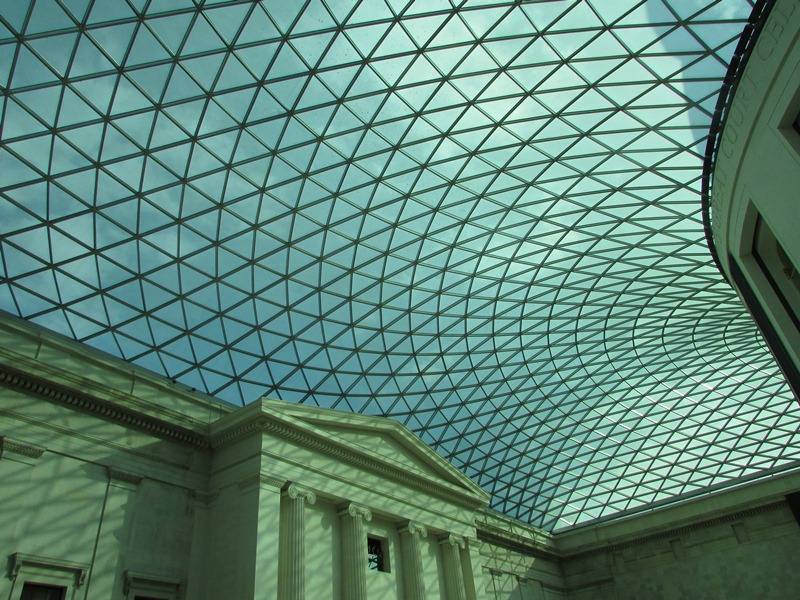
Interview by Ta Nea, UK Correspondent Ioannis Andritsopoulos with the Director of the British Museum, Hartwig Fischer

Mr Fischer, do you think the Greeks are right to want the Parthenon Sculptures back?
I can certainly understand that the Greeks have a special and passionate relationship with this part of their cultural heritage. Yes, I understand that there is a desire to see all of the Parthenon Sculptures in Athens.
Would the British Museum consider returning the Parthenon Sculptures to Greece?
There is a long-lasting debate on this issue. The Parthenon Sculptures in Athens are being shown in a specific context and since 2009 in this wonderful new museum in a very fascinating display. And the Parthenon Sculptures that are in London tell different stories about a monument that has a very complex history. As a temple of Athena, and then a Christian church and then a mosque. It was blown up in the 1687, and abandoned and neglected. And then rediscovered. And the rediscovery is obviously part of European history. We are showing the Parthenon Sculptures which are at the British Museum in a context of world cultures, highlighting achievements from all over the world under one roof, and showing the interconnectedness of cultures. Since the beginning of the 19th century, the monument’s history is enriched by the fact that some (parts of it) are in Athens and some are in London where six million people see them every year. In each of these two locations they highlight different aspects of an incredibly rich, layered and complex history.
Greece says that it’s not just about returning the sculptures. It’s about reuniting the sculptures. Because they are a single work of art that should not be divided and fragmented. What’s your take on that?
People go to some places to encounter cultural heritage that was created for that site. They go to other places to see cultural heritage which has been moved and offers a different way to engage with that heritage. The British Museum is such a place, it offers opportunities to engage with the objects differently and ask different questions because they are placed in a new context. We should cherish that opportunity. You could of course, and with reason, regret that original contexts are dissolved.
When you move cultural heritage into a museum, you move it out of context. Yet that displacement is also a creative act. That is also true for the Acropolis Museum; the sculptures are out of their original context there. Nothing we admire in the Acropolis Museum was created for the Acropolis Museum.
It’s there though. The Museum faces the Acropolis. It’s not the same as being (the Sculptures) here in London.
Absolutely not. You’re right. They are close to the original context but they have still been taken away from it and been transformed through this act.
So the answer to the question if you would consider returning the Sculptures to Greece, is it a no? Is it a yes? Is it a maybe?
The British Museum was created in 1753 and opened in 1759 to allow people to not only encounter world cultures free of charge, but also to draw comparisons between cultures. Parliament who created this institution transferred the responsibility for this collection to the Trustees, stipulating that this collection has to be preserved for future generations. And that fiduciary responsibility the Trustees of the Museum take absolutely seriously. The Trustees feel the obligation to preserve the collection in its entirety, so that things that are part of this collection remain part of this collection. And to share them as much and wherever this is possible. The British Museum lends thousands of objects every year. And we also lend to the Acropolis Museum, we have excellent relations with our colleagues there.
But that is the reason why the Museum will not permanently return the Sculptures? What you just told me about the Trustees.
Yes.
However, the British government has the power to pave the way for the Sculptures’s return. The majority of the trustees (15 out of 25) are appointed by the government. The parliament could also legislate. So there is, in theory, a way for it to happen.
Well, if the British Parliament wants to legislate on this, then it is sovereign in doing so. It would have to pass primary legislation to change the legal basis that we are operating on today.
A few months ago, I had the opportunity to interview the Labour leader Jeremy Corbyn. He told me that if he became PM he would make sure the Parthenon Sculptures return to Greece. What’s your comment on that?
I think that this is Mr Corbyn’s personal view on the question, that you take note of. Obviously, that is not the stance and the view of the Trustees of the Museum.
And of the Director as well?
And of the Director.
Are there active talks between the Museum and Greek officials or authorities about a possible return of the sculptures?
There are no active talks.
According to all polls, the British people are in favour of the reunification. Does that mean anything to you?
I see the value of the objects that are part of the collection of the British Museum in being at the British Museum in the context that we just discussed.
There is a question over the scultures’s ownership. Would you accept that Greece is the legal owner of the Parthenon Sculptures?
No, I would not. The objects that are part of the collection of the British Museum are in the fiduciary ownership of the Trustees of the Museum.
Would you consider an open-ended loan to Greece?
There are two aspects to this: firstly, there are no indefinite loans. Every thing we lend, even on a long-term basis, will, at some point, return to the British Museum. And then it can go out again. The other aspect is that when we lend, we lend to those places where the ownership is acknowledged.
There were several media reports last month regarding a leak in the Duveen Gallery where the Marbles are housed. As you can imagine there was a negative reaction. What’s your explanation about what happened?
We had a tiny leak in one area of the roof in the Parthenon Sculptures’ galleries. A small quantity of rain entered the gallery, but did not touch any of the Sculptures and this was fixed right away.
But you could see plastic containers collecting water next to the Sculptures. Did you find this embarrassing to the Museum?
Buildings, especially buildings that are of a certain age, have to be taken care of. I don’t want the slightest little leak in any of the roofs of the Museum. We’re all aware of our responsibilities. And that we all have to do the utmost to live up to that responsibility. And that is what we do.
Could you reassure the Museum’s visitors that in the future when it rains again they’re not going to see the same phenomenon?
We will be renovating the building over the next few years. The immediate problem has been solved.
Have you visited the Parthenon and the Acropolis Museum?
Of course I have.
Did you like it?
You cannot ask me if I like the Parthenon!
Why not? Some people might not like it. They have the right not to!
I think it’s one of the miracles of world culture. When you stand in front of it you are filled by awe and admiration. That also goes for the Museum, but in a different way. The Museum is a major achievement. It’s a beautiful museum. It’s very inspiring.
Don’t you think that something is missing there?
Oh, I think that everywhere in the world something is missing. That is our human condition.
What are the chances the Parthenon Sculptures returning to Greece?
I think I’ve answered that question.
You are the first non-British director of the British Museum since 1866. How does that feel, especially in times of Brexit?
I feel, not as a German, but as the person I am, extremely honoured to be the Director of this institution. And to be responsible for the future of this institution, along with all my colleagues and the Trustees and the patrons. I do not assume this role as a German or the son of somebody who was born French or somebody who is married to somebody who was Italian and is now French and in between was Peruvian. I assume this as a European, who is a citizen of the world and who cherishes this.
Do you think Brexit would affect the British Museum’s operation?
Yes. I think that, depending on what kind of Brexit will happen in the end, if it happens, it will have a very strong impact.
Do you fear a no-deal scenario?
A no-deal Brexit would have a more profound impact.
Why did you want to become Director of the British Museum?
It was not my plan from birth, nor when I started my career. But being asked to think about it, I thought that this is the most wonderful place in the world.
Have you thought about what you’d like to do after leaving the British Museum – whenever that happens?
I’ve never thought about those things. I concentrate on the work.
An option would be for you to be the Director of the Acropolis Museum. If you take the Marbles with you!
You are a very creative journalist!
For more on Hartwig Fischer's plans for the Beitish Museum, do read the article by Martin Baily in the Art Newspaper, 01 September 2017, follow the link here.